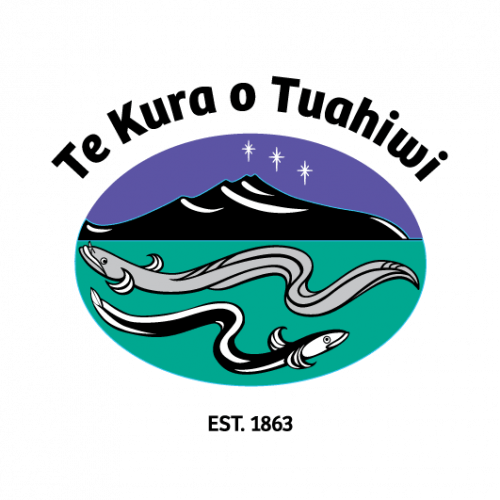Bilingual Education @ Our Kura.
Te Kura o Tuahiwi - December 7, 2023
Over the past four years our roll has more than doubled. We have several new whānau and many prospective whānau so we thought it would be beneficial for everyone if we clearly outlined how our kura is made up and what we offer so that everyone is on the same page and a clear understanding of what happens in Puaka and Whitireia.
Currently we have three Level 1 immersion classes. We call this group Whitireia. Whitireia was a name gifted to us by Te Ngāi Tūāhuriri Rūnanga and was the name of gardens close by, the name of a star that would have guided our people in navigation and the name of Paikea's wharenui connecting us with our Ngati Porou cousins.
We also have five Level 3 immersion classes. We call this group Puaka. Puaka was also gifted to us by Te Ngāi Tūāhuriri Rūnanga and is the name of a cluster of stars.
We often refer to Whitireia and Puaka in our pānui, during our day and you will see our tamariki in Whitireia and Puaka both working together and across the classes in collaboration.
Our Whitireia kaiako speak Māori 80-100% of the day. Numeracy, literacy and other learning areas are taught in Te Reo Māori. It is beneficial for the tamariki in Whitireia to only hear Te Reo Māori being spoken so that they commit to only speaking in Te Reo Māori. This helps them to progress further, faster.
Our Puaka kaiako mainly teach in Te Reo Pākehā but it is expected that they speak in Te Reo Māori at least 30% of the day. This includes wā karakia. Numeracy, literacy and other learning areas are all taught in Te Reo Pākehā however there should be lots of instructional use of Te Reo Māori throughout the learning programme.
Research tells us that our ākonga (learners) have huge benefits to the way they think and their achievement if they are bilingual or multilingual. Learning more than one language means your child will have cognitive advantages over children who only speak english. Learning a new language also helps develop skills, attitudes and understandings that they can transfer to learning other languages.
Bilingual education is most effective when whānau, the school and the wider community see it as good for ākonga to learn a second language and to become fluent in two languages. This is called an "additive" approach, because students are "adding" a second language rather than replacing one language with another. Research shows that additive approaches are very effective educationally and result in ākonga becoming bilingual as well as biliterate – being able to read and write in two languages.
The research also highlights that becoming biliterate is the key to academic success. Ākonga who are biliterate are more likely to succeed academically and also often outperform students in English-medium schools. Of course, they also end up knowing two languages rather than just one.
We are proud that at Tuahiwi we can offer whānau two different levels of immersion. Because there are two different levels the outcome for the ākonga and whānau will be different depending on what level you choose.
There is a difference between being able to hold a conversation in a second language and knowing the language well enough to be able to learn academic subjects successfully. Ākonga may be able to hold a conversation in Māori after two or three years at Level 1 in kura but will require a longer period of time in Level 1 to have an academic standard of Te Reo Māori.
It also takes longer to learn an academic subject when it is being taught in your second language, and the research shows ākonga need to stay in the bilingual programme for at least six years to know enough to be able to cope well academically. That is, there is a "second language learning delay", which means ākonga are below their level for a subject when they start learning in their second language (in this case, Māori) but then they start to catch up.
This means that at primary school level, an ākonga needs to be in Māori-medium education (e.g., a kura or bilingual unit) for at least six, and preferably eight years, and they need to be "taught Māori" as well as being "taught in" Māori.
If students do not have good basic literacy skills in Māori they will struggle with academic English and with learning more generally; this is why it is so important to allow sufficient time for students to master te reo Māori first.
This difference between conversational and academic language also applies to learning English. Knowing how to speak English is not the same as being able to use classroom or academic English successfully. So, just like academic Māori, academic English also needs to be taught. This is why even very high level immersion programmes – where most of the teaching is in Māori – should also teach English at some point. Language learning will not just "take care of itself". Ākonga need to be taught how to read and write in English – they do not just "pick up" these skills automatically, even though English is spoken widely outside the school.
Teaching academic English helps ākonga to understand how this is different from ordinary conversational English. It also helps ākonga to understand more clearly the similarities and differences between Māori and English.
To be successful, bilingual programmes also need strong support from whānau and the community. Even if parents and whānau do not know much Māori themselves, they can still encourage their children to speak and read to them in Māori at home, wherever possible. This will help everyone at home to learn more Māori!
Subscribe
Subscribe to our updates and receive the latest news and notifications direct to your inbox. Sign up here.


